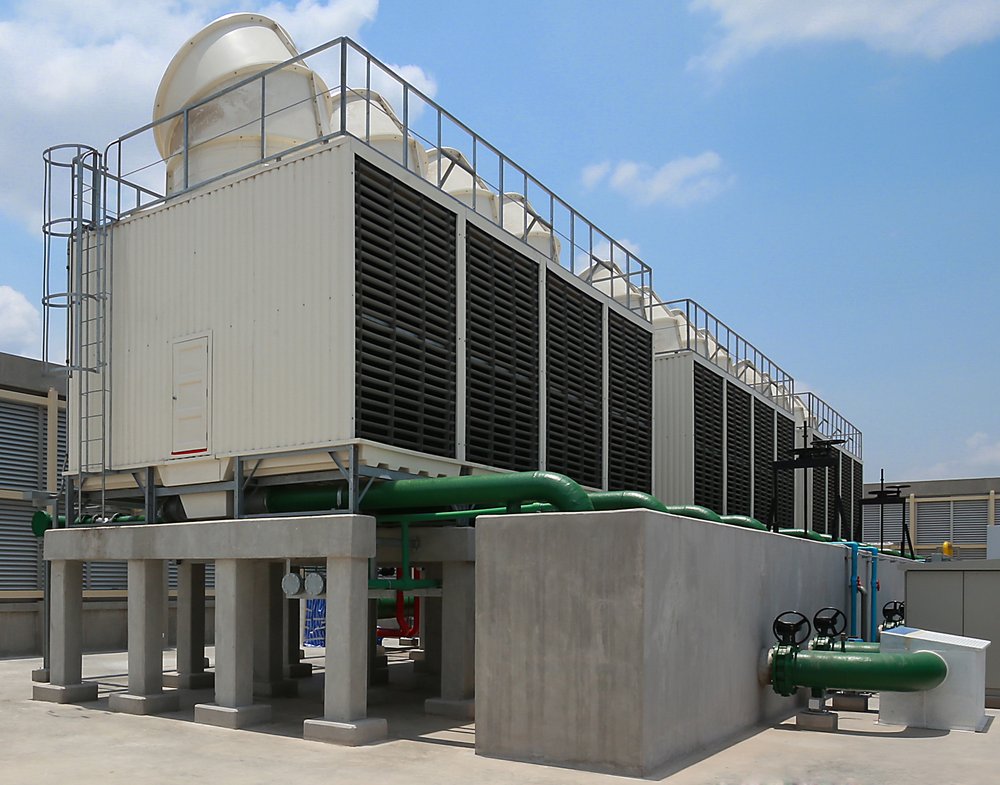Some of the disgusting stuff cleaners find when they check NY water-cooling towers
Aug. 9, 2025, 11:01 a.m.
Here’s what to know about water-cooling towers amid a cluster of Legionnaires’ disease cases in Central Harlem.

Pollen, dirt, moss, algae and dead birds are some of the things cleaning crews encounter when cleaning New York City's ubiquitous rooftop water-cooling towers, according to representatives of companies doing such dirty work.
“Whatever’s in the air really gets pulled into” the systems, said Stanley Young, field supervisor for Donnelly Mechanical, a New York-based heating, ventilation and air conditioning construction and maintenance company. “Because these towers have fans, and it’s drawing outside air into it.”
Building water-cooling systems – which New Yorkers take for granted under ordinary circumstances – are in the spotlight as New York City grapples with a cluster of Legionnaires’ disease, a severe pneumonia whose cause has long been linked to water droplets or vapors emanating from water-cooling towers.
Companies that maintain and clean the systems say they've been busy since the current cluster emerged more than a week ago. As of Friday afternoon, at least three deaths and 83 cases of Legionnaires’ have been recorded in the outbreak, which the Department of Health has said is centered in Central Harlem.
Inspections of water-cooling towers in the area have turned up Legionella bacteria in 11 buildings, but city officials have not yet said if those buildings are tied to the reported illnesses.
Water-cooling towers, which are used to cool water for air conditioning systems, have previously been sources of Legionnaires’ disease outbreaks in the city. The Legionella bacteria that causes the disease thrives in warm water, which is pumped into and circulated inside the cooling towers before cold water is released.
Cleaning a water-cooling tower requires a combination of powerwashing and applying chlorine-based chemicals to disinfect the water inside, according to maintenance experts.
“These things can be perfect incubators for the proliferation of biological growth,” said Rich Parker, president and CEO of the Metro Group, a New York City-based building services company. “You got sunlight, water at a warmer temperature and air.”
Representatives from the Metro Group and two other maintenance companies said they have been inundated with calls from current and prospective clients.
Steven Serrano, the CEO of New York City Cooling Tower Inspections and Services, said in the past few days, he’s received at least about 50 calls from current and prospective clients, up from 20 to 25 per day in past weeks and months.
Serrano said customers want to know, “What is the process of making sure my building is OK?”
After the cluster of Legionnaires’ cases was detected in Central Harlem, city officials screened all water cooling towers in the area for Legionella bacteria. The 11 buildings that tested positive for the bacteria have been ordered to clean their water cooling towers, and take other remediation measures. The city has not released the addresses of the buildings.
After a Legionnaire's outbreak in the South Bronx in 2015, the City Council passed a law requiring all cooling towers to be registered with the city and inspected for contaminants every three months while in use. Building owners must also have a maintenance plan, developed by a qualified professional, to properly care for the towers.
Towers are also required to be cleaned about twice a year. And any towers with health violations are required to conduct additional cleanings, according to local law.
Building residents can check the city health department's website to see if their building has a water-cooling tower, and if any violations were found in recent inspections.
After the passage of the 2015 law, Parker said his company’s customer base more than doubled. But after that spike, business has declined in recent years, which he attributes in part to a lack of enforcement.
Gothamist reported this week that inspections of water cooling towers sunk to a near-record low before the latest Legionnaires’ disease outbreak. A spokesperson for the local Department of Health and Mental Hygiene blamed a staffing shortage for the decline.
“Enforcement has dropped precipitously,” Parker said. “You have these laws on the books, but if you don’t have inspectors going out and inspecting them… the same conditions come back.”
Parker also suggested there should be stronger legislation targeting the cleaning and maintenance of other common sources of the spread of Legionella bacteria, like showers and fountains.
Serrano, of New York City Cooling Tower Inspections and Services, said in some cases his company also inspects and tests water systems for buildings – which can include tests for Legionella, E. coli, and other bacteria.
Serrano also said he thinks it’s also important to have independent inspectors perform required inspections. Currently water treatment companies can perform inspections of the water cooling towers they manage, he said.
“It’s as if you’re having your fox watch the hen house,” Serrano said. “It’s just something you don’t want to do.”
Legionnaires' disease hits Central Harlem. Here's what to know about the outbreak. Third person dead in Central Harlem Legionnaires' outbreak, NYC officials say Legionnaires' inspections sank to near-record low ahead of NYC outbreak